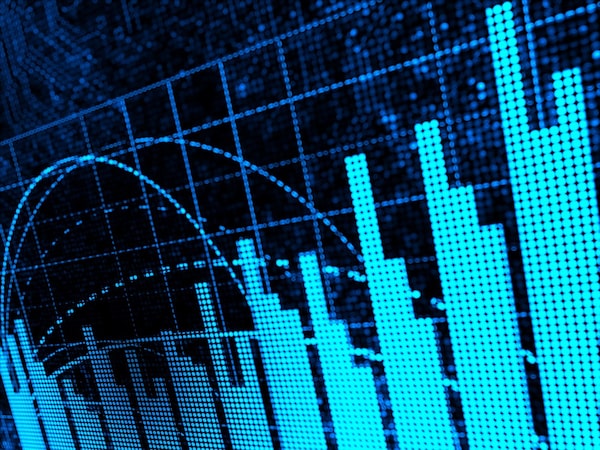
A spurt of post-lockdown spending could spur inflation, but labour markets are not exactly screaming that wage growth is going to be an issue.hh5800/iStockPhoto / Getty Images
Wall Street finally has a brand new bogeyman. After fretting about COVID-19, trade wars, interest rates, China’s economy, or the eurozone disintegrating over the past decade, inflation has emerged as a real fear and bonds are being trashed. Is the angst really justified?
On the face of it, the only surprising thing seems to be how slowly concerns have been building. To fight the economic fallout from the coronavirus pandemic, the 48 biggest central banks have slashed interest rates and bought US$9-trillion worth of financial securities, according to J.P. Morgan Asset Management.
Throw in various government stimulus packages, and the total support comes to an astonishing US$20-trillion, the company estimates. Now that vaccine rollouts are happening at pace and infections are falling in most countries, economists are ratcheting up growth forecasts for 2021 aggressively.
Many expect one of the biggest booms in history. The International Monetary Fund has pencilled in a global growth rate of 5.5 per cent for 2021, the highest in almost five decades, as consumers emerge from lockdowns with padded savings and a hunger for something other than video conferencing, Netflix and home improvement.
But some investors are beginning to freak out about the possible consequences of this growth spurt – the long-heralded return of inflation that would rot away bond returns and potentially unsettle markets writ large.
Global fund managers now think inflation is the single biggest danger to markets, according to Bank of America’s latest survey of these professionals in March, the first time it has topped the fear table. Not coincidentally, a bond market “tantrum” was pinpointed as the second-biggest tail risk.
Investors arguably already have one on their hands. Longer-maturity U.S. Treasuries have lost almost 13 per cent already this year. That may seem modest compared with stock market tumbles, but it is the worst quarterly performance in at least 34 years, notes Bespoke Investment Group.
Many think more pain is coming. The chorus of bond bears, never short of a baritone or tenor over the past decade, has swelled dramatically this year as a procession of big-name money managers have started singing from the same sheet.
Ray Dalio, co-chairman and co-chief investment officer of Bridgewater Associates LP in Westport, Conn., recently argued that “the economics of owning bonds has become stupid,” as “ridiculously low” fixed-income yields meant they were virtually guaranteed to lose money after inflation and do little to insulate a broader investment portfolio from stock market tumbles.
Bill Gross, the erstwhile “bond king,” has also chimed in. On March 16, he revealed a bet against U.S. Treasuries on the view that the recent US$1.9-trillion stimulus package will kick the U.S. inflation rate up to the 3 per cent to 4 per cent range in the coming year and heap pressure on the U.S. Federal Reserve Board to revise its uber-dovish stance.
However, the inflation narrative has gone way beyond what the markets are actually pricing in, which, in turn, has arguably gone way beyond what is actually likely to happen.
Inflation will accelerate mechanically in the coming months, simply given the base effects from last year’s coronavirus-blasted data. A spurt of post-lockdown spending could give it some extra juice in places. But labour markets are not exactly screaming that wage growth is going to be an issue, and the longer-term inflation outlook remains clouded by the same secular, powerful forces that have kept it contained for decades.
“Inflation dynamics do change over time, but they don’t change on a dime,” U.S. Fed chair Jerome Powell stressed to the U.S. Senate last month. Or as Kit Juckes, macrostrategist at Société Générale SA in London, pithily put it in a recent note highlighting how rare the phenomenon actually was in a broad historical context: “Inflation is about as common as dragons.”
It was only the “heady cocktail” of post-Second World War rebuilding, the birth of welfare states, the collapse of the Bretton Woods exchange rate system, trade unionization, and an oil crisis that helped send inflation spiking in the 1970s, he said. It might re-emerge as a genuine, long-term threat, but that is likely to take decades to manifest itself, not months.
Nor are bonds likely to be ditched en masse by investors. Buying bonds might seem economically “stupid,” but regulations and accounting rule everything around us. For vast swaths of the investment industry, like pension funds and insurers, there is no real alternative to continue to shovel trillions of dollars into fixed income because of various rules that they have to follow.
Moreover, the bond bears forget the international context: the U.S. is already an island of returns in a vast ocean of sub-zero bond yields. A 10-year Treasury yield of 1.7 per cent now is higher than 69 per cent of all bonds in the Bloomberg Barclays Global Aggregate Index, says Iain Stealey, international chief investment officer within the global fixed-income, currency and commodities group at J.P. Morgan Asset Management in London.
If it moves much higher, there will probably be a wave of money coming in from yield-starved foreign investors. So, until wage growth – the real leading indicator of broad-based inflation – starts picking up in a big way, this is a bogeyman investors do not need to fear so much quite yet.
© The Financial Times Limited 2021. All Rights Reserved. FT and Financial Times are trademarks of the Financial Times Ltd. Not to be redistributed, copied, or modified in any way.